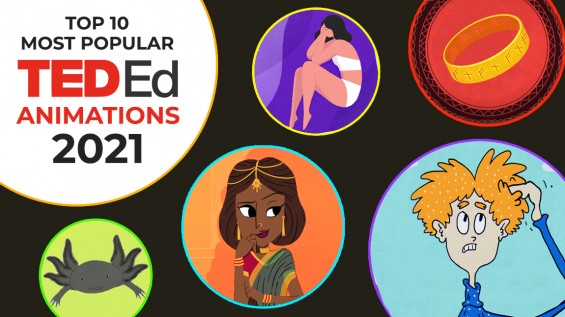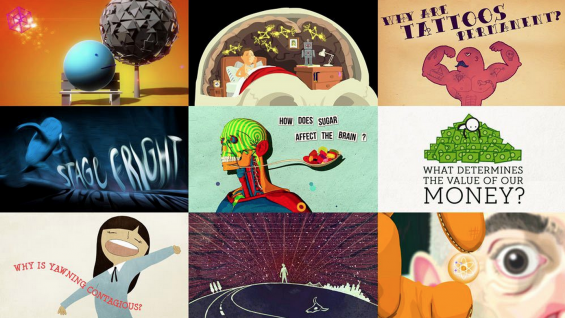
Exploring the animal kingdom: 7 TED-Ed Lessons on our favorite furry (and not-so-furry) friends

There are no limits to the beauty and mystery of the animal kingdom. From the small insects that wriggle in the dense moss of the forest to the enormous blue whales that lurk in the depths of the sea, these creatures lend wonder to our world. TED-Ed’s video library is packed with lessons on animals, with animations that feature wildlife from bees to birds to bears. Check out this list of our seven favorites, and let us know — which animal would you like to see a lesson on?
1. The case of the vanishing honeybees - Emma Bryce
In the past decade, the US honeybee population has been decreasing at an alarming and unprecedented rate. While this is obviously bad news for honeypots everywhere, bees also help feed us in a bigger way — by pollinating our nation’s crops. Emma Bryce investigates potential causes for this widespread colony collapse disorder.
2. How to speak monkey: The language of cotton-top tamarins – Anne Savage
The cotton-top tamarin is a very vocal monkey — the species communicates using a sophisticated language of 38 distinct and grammatically structured calls! Anne Savage teaches a few of these chirps and whistles, taking us through a day in the life of Shakira the tamarin (using sounds pulled from the wild) as Shakira signals to her family, talks to her food and warns against potential predators.
3. Penguins: Popularity, peril and poop – Dyan deNapoli
Penguins are odd birds. For one, they cannot fly (but they are amazing swimmers), and, contrary to popular belief, the majority of penguin populations live in warmer regions. But these beloved birds are in danger, with populations declining up to 90%. Dyan deNapoli explains the reasons behind the decline — and why penguins are like the proverbial canary in the coal mine of our oceans.
4. Disappearing frogs – Kerry M. Kriger
Frogs (and amphibians in general) are in danger — worldwide, nearly one-third of the world’s amphibian species are on the verge of extinction. And yet, frogs contribute to our well-being in many important ways. Kerry M. Kriger describes why frogs are in trouble and how you can help save them.
5. The survival of the sea turtle - Scott Gass
Watch the miraculous journey of infant sea turtles as these tiny animals run the gauntlet of predators and harsh conditions. Then, in numbers, see how human behavior has made their tough lives even more challenging.
6. Tracking grizzly bears from space – David Laskin
Grizzly bears stick to a mostly vegetarian diet in sync with plant growing seasons. However, as grizzlies’ habitats grow smaller, food is harder to come by. Using NASA satellites, scientists track the shifting, interrelated patterns of grizzlies and plants. David Laskin explains how this data can help protect the threatened bears.
7. From the top of the food chain down: Rewilding our world – George Monbiot
Our planet was once populated by megafauna, big top-of-the-food-chain predators that played their part in balancing our ecosystems. When those megafauna disappear, the result is a “trophic cascade,” where every part of the ecosystem reacts to the loss. How can we stay in balance? George Monbiot suggests rewilding: putting wolves, lions and other predators back on top — with surprising results.
Which animal would you like to see a lesson on? Let us know in the comments!




Love all these lessons. Have used them in my AP Environmental and Environmental classes for the last couple years. The grizzly bear one goes well with our school planetarium since satellites are mentioned and play a key role in keeping track of the grizzly movements. Frogs as an indicator species is an important part of any ecology lesson as is the loss of bees and pollination! (keystone species) Sea turtles of all kinds are now on the endangered species list. This lesson provides a good base to launch a discussion of man’s impact on species and how things can be changed! The last lesson mentioned is a great lesson on trophic cascades, pair it with a video of the introduction of wolves into Yellowstone and you have a great lesson or possible debate for the day.
I thought I’d have to read a book for a dirosvecy like this!